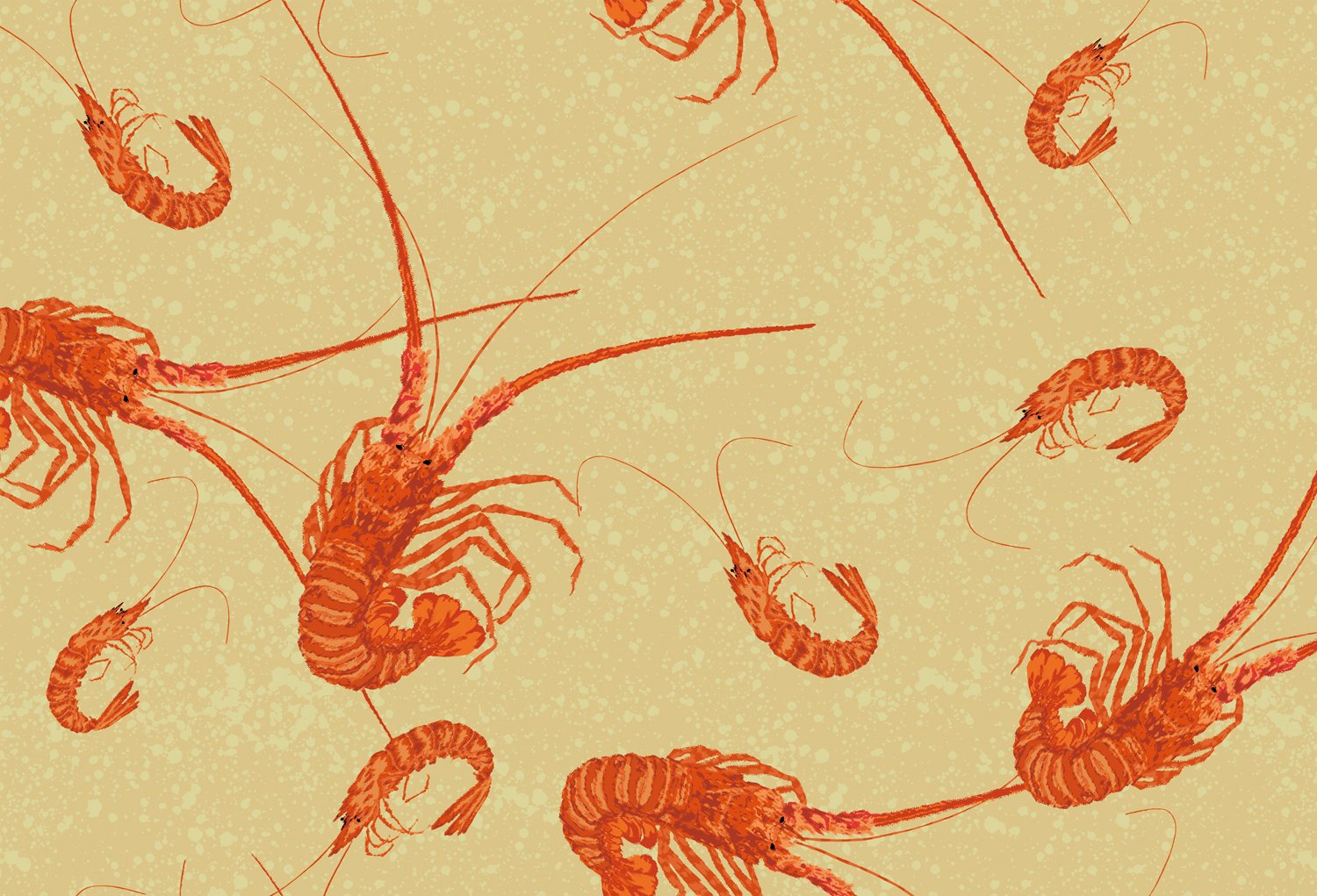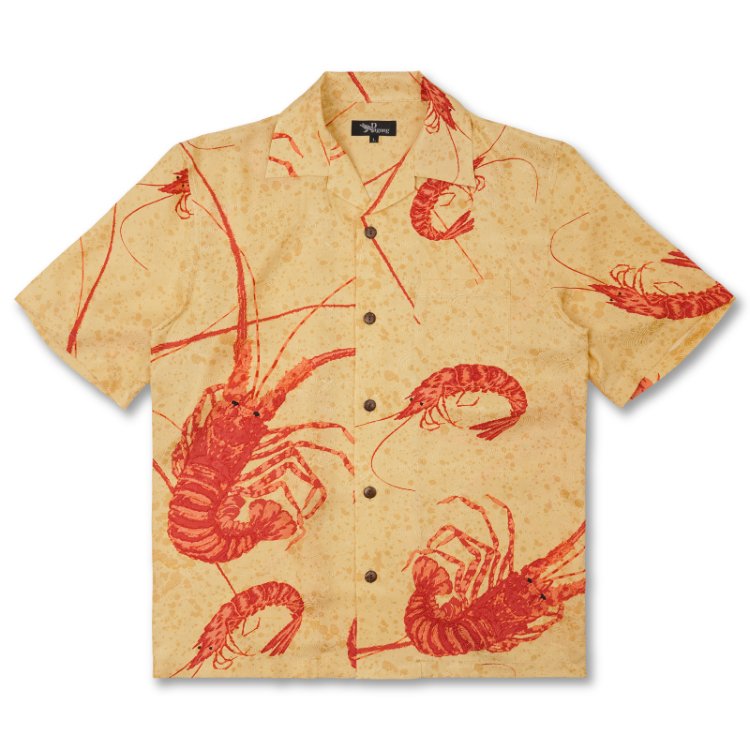New Pattern “Nishiki Ebi”
Shrimp motifs are one of the traditional Japanese patterns, and are known to be particularly auspicious.
Shrimp are considered to be a symbol of longevity, and the way they bend over is said to represent a long lifespan. For this reason, shrimp-patterned kimonos are imbued with the meaning of wishing for longevity and good health, and are considered to be suitable for use at celebratory occasions where people wish for longevity, such as New Year's Day. In
addition, shrimp shells are hard and durable, so they are reminiscent of samurai wearing armor, and so they were also used as a symbol of "military luck" and "courage." They are also thought to represent the strength to overcome difficulties, and shrimp designs were sometimes used on the accessories and weapons worn by samurai on the battlefield.
Even today, shrimp-patterned kimonos are popular for important events that mark turning points in life, such as coming-of-age ceremonies and weddings, as a symbol of longevity, good fortune, and prosperity.
The "Nishiki Ebi" pattern featured this time has a special meaning due to the word "nishiki" (Western-style shrimp), in addition to the auspiciousness of the shrimp motif itself mentioned above.
The word "nishiki" refers to colorful and beautiful textiles, and in Japan, it has long been a symbol of nobility and splendor. In the case of "nishiki ebi," the addition of "nishiki" strengthens its meaning as something even more luxurious and valuable. Nishiki ebi is characterized by its beautiful colors and patterns, and is said to give viewers a sense of abundance and happiness.
The Nishiki ebi pattern is a pattern that combines luxury and formality, and is imbued with many positive meanings such as longevity, prosperity, courage, abundance, and happiness. It is a pattern suitable for wearing on celebrations and special occasions, and expresses the beauty and deep meaning of Japanese culture.
“Nishiki Ebi” Products:



